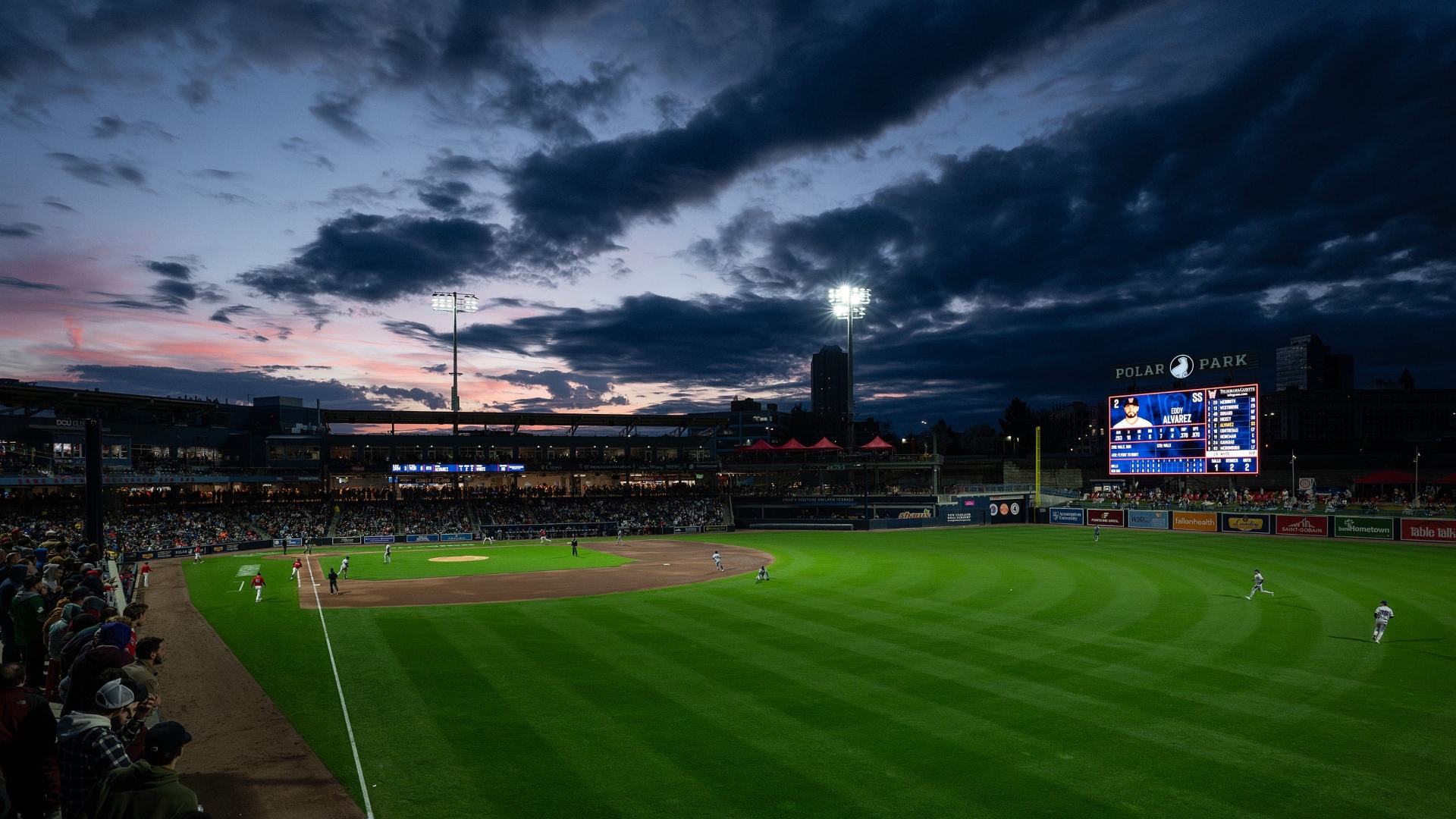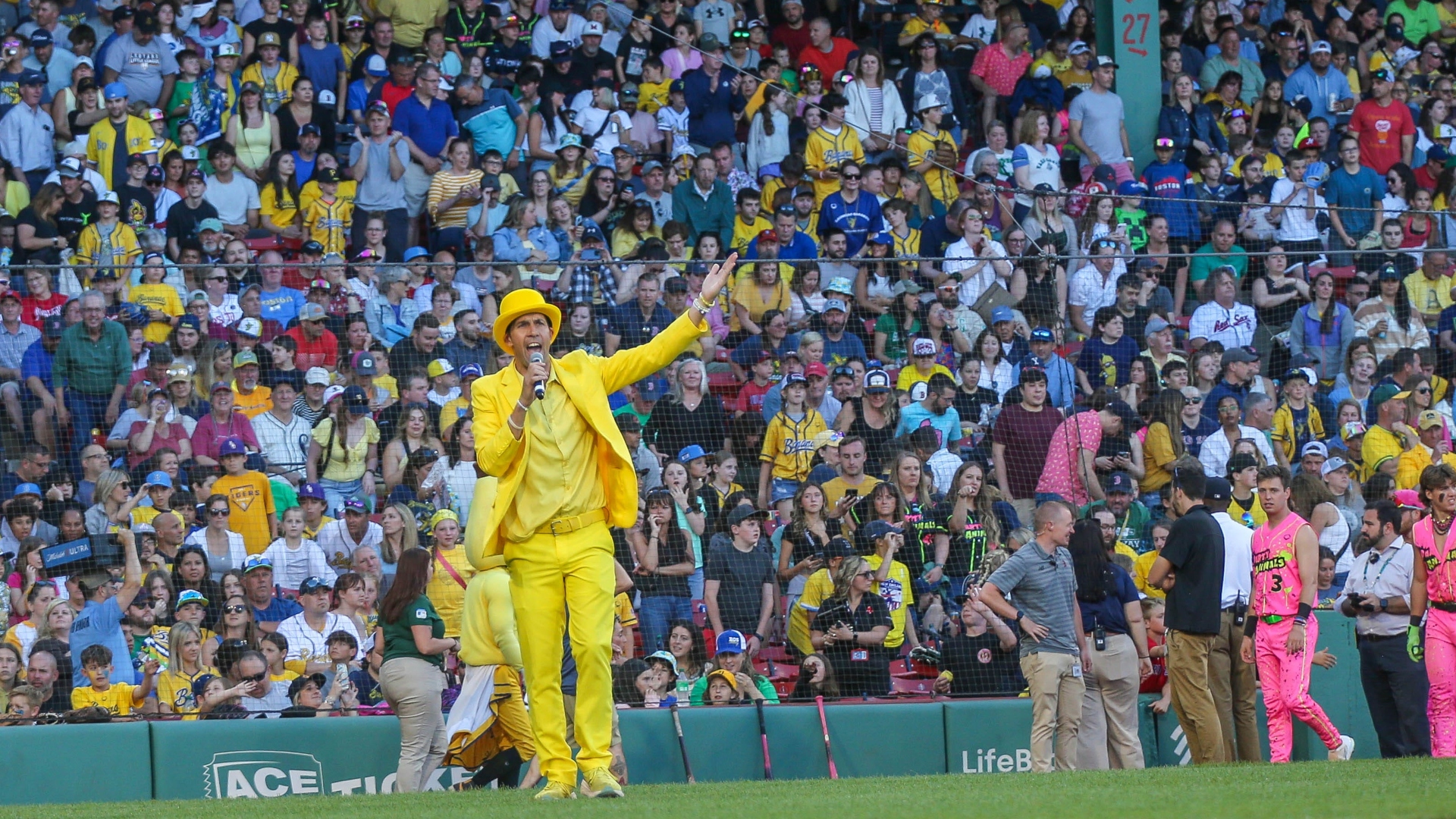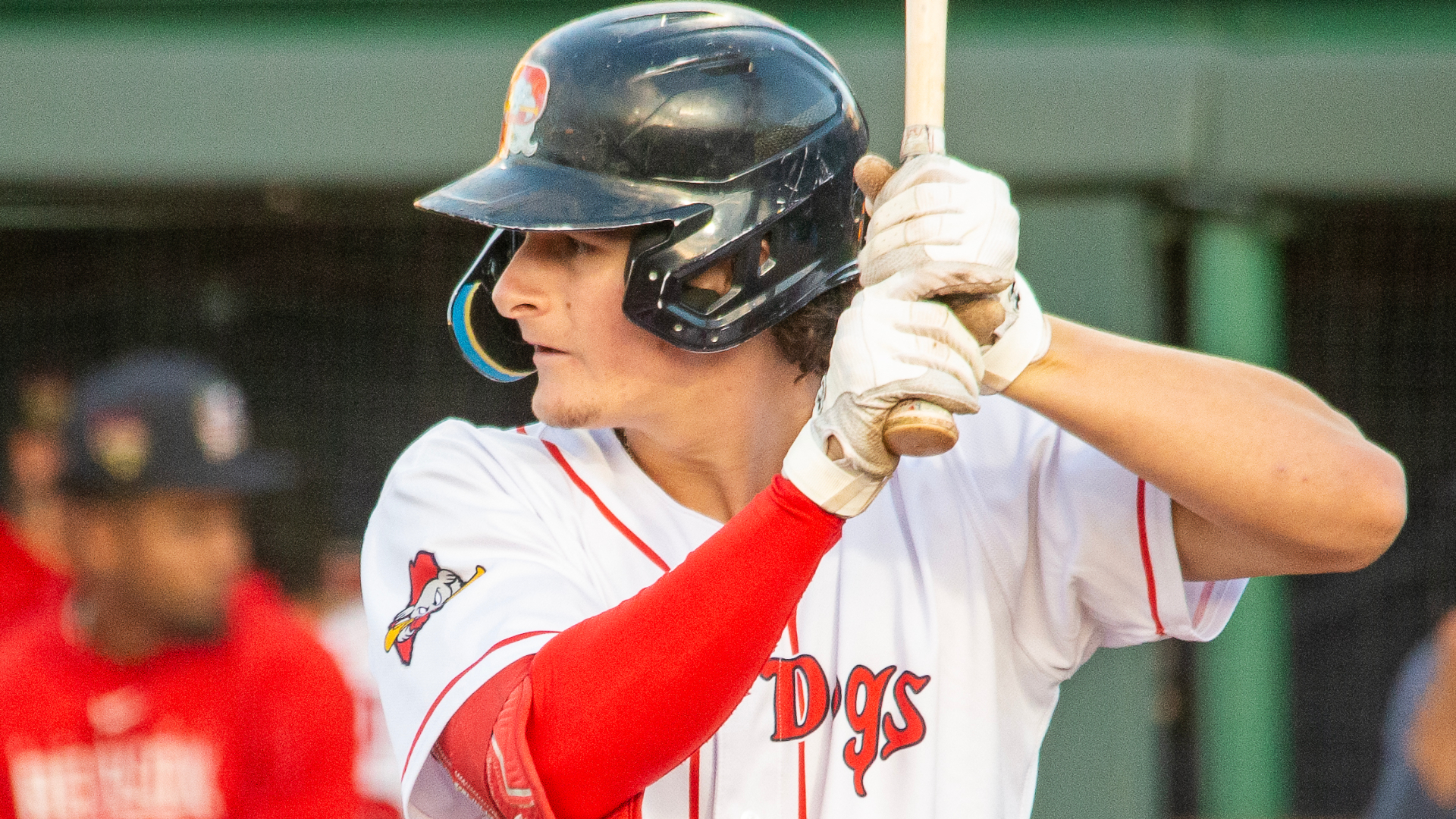NESN.com’s Top 100 prospect list rolls on.
After covering the bottom 20 qualifiers for our Top 100 prospects list on Thursday and prospects 61-80 Friday, on Saturday we reach the halfway point with prospects 41-60. The previous prospects covered have generally been high-ceiling players who are several years away from the majors, or lower-ceiling players who can contribute in the majors soon.
The minor leaguers on this portion of our list generally have some elite tools, but questions surrounding their overall ability, health and approach. Some are potential All-Stars, while several will likely see the flaws they have now prevent them from reaching their potential.
60. Wily Peralta, starting pitcher, Milwaukee Brewers
Prospect junkies and Brewers fans alike started the 2011 season wondering who the real Wily Peralta was –- was he the dominant force who struck out 118 batters in 2009, or the flameout who struggled badly in 2010? The answer lies somewhere in between, and while Peralta may not be an ace in the making, he’ll be an MLB-ready number three starter by July. If he can improve his changeup, he should have a few very successful years, similarly to Ervin Santana.
59. Neil Ramirez, starting pitcher, Texas Rangers
Perhaps no prospect was pushed as aggressively in 2011 as Ramirez, who the Rangers promoted to Triple-A after just one dominating start in High-A. Ramirez performed quite well in the upper minors, posting a 10.41 K/9 rate and 3.63 ERA. His walk and groundball rates are troubling though, as was his relatively low innings total. Repeating Triple-A at age 23 still leaves Ramirez ahead of the curve, though, and he could be MLB-ready by July.
58. Jonathan Singleton, first baseman, Houston Astros
A big part of the Hunter Pence trade, Singleton is a high-upside first baseman who may not fit the offensive mold for that position. Singleton has posted a consistently excellent OBP during his time in the minors, but has yet to show the type of power teams like to see from a corner infielder. He’s still just 20, so his pop might come, but if he fails to eclipse 40 extra base hits (XBH) again in 2012, his stock will fall.
57. Nick Franklin, shortstop, Seattle Mariners
Franklin’s 2011 season was a disappointing one. The 20-year-old couldn’t stay on the field thanks to freak injuries and illness, and when he was playing he didn’t show anywhere near the same type of power he did in his breakout 2010 campaign. Franklin was also shaky defensively, and some believe he’ll have to move to second base. His ceiling is still as a shortstop with 20-homer pop and 15-steal speed, but he looks less likely to reach it than he did a year ago.
56. Will Middlebrooks, third baseman, Boston Red Sox
This is a slightly aggressive ranking for Middlebrooks, and it’s true that his contact issues may prevent him from reaching his potential. But if he can improve his approach even slightly, Middlebrooks’ plus power, arm and defense could make him an All-Star at a time when there are few elite third baseman in the game. Middlebrooks should begin 2012 in Triple-A, and while he could use another 300-or-so at-bats there, he’ll be ready for the majors by July.
55. Drew Hutchison, starting pitcher, Toronto Blue Jays
The best pitching prospect in a system littered with exciting arms, Hutchison boosted his value more than just about any other Toronto prospects in 2011. Still just 21, Hutchison dominated in 134.2 innings between Single- and High-A before making three starts in Double-A at season’s end. What’s further encouraging is the frequency with which he produces ground balls. Some see Hutchison as more of a mid-rotation workhorse, but his ability in keep the ball on the ground can make him a No. 2 starter.
54. Zach Lee, starting pitcher, Los Angeles Dodgers
The Dodgers’ first round pick in the 2010 draft, Lee is a scout’s dream in terms of his athleticism and build. Built to be a workhorse starter with a repeatable delivery, Lee pitched well in his first professional season, posting a 3.68 FIP (Fielding Independent Pitching) with a solid 2.6 BB/9 rate. His stock may fall a little if he doesn’t improve his 7.51 K/9 rate from 2011, but he’ll be just 20 for the majority of the season, so he has plenty of time to impress.
53. Jean Segura, shortstop, Los Angeles Angels
One of the most dynamic middle infield prospects in the game, Segura would rank higher on this list were it not for an injury-marred 2011 campaign that saw him play just 55 games, nearly half of which came in rookie ball. Injuries can be forgiven, but Segura’s was especially worrisome because he hurt his hamstring and derives much of his value from speed. He should begin 2012 in Double-A, and could supplant Erick Aybar as the Angels’ shortstop in 2013.
52. Jake Odorizzi, starting pitcher, Kansas City Royals
2011 was a tale of two seasons for Odorizzi, who absolutely dominated in 78.1 innings in High-A before hitting the wall in 68.2 innings in Double-A. It’s tempting to just chalk his struggles up to a 21-year-old trying to compete in the upper minors, but Odorizzi’s home run rate has to give even his biggest supporters pause. He’ll likely return to Double-A to begin 2012, and a better performance this time around will cement his status as an elite pitching prospect.
51. Wilin Rosario, catcher, Colorado Rockies
Once viewed as one of the elite catching prospects in the game, Rosario took a major step back last year in terms of his approach at the plate, seeing his strikeout rate rise while his walk rate fell, and reaching base at a sub-.300 clip. Rosario still has plus power and a plus arm and is defensively adequate, but will need a strong offensive season at Triple-A if he wants to profile as more than a mid-tier MLB catcher.
50. Michael Choice, outfielder, Oakland Athletics
One of the most powerful prospects in the game, Choice mashed 30 homers and 27 doubles in High-A last season, all while maintaining a .375 OBP and manning center field. He doesn’t rank higher on this list, though, because of his strikeout issues and the likelihood that he’ll need to move to right field. Choice has a patient approach and should get on base at an acceptable clip in the majors, but his strikeout rate may prevent him from becoming an elite player.
49. Yonder Alonso, first baseman, San Diego Padres
Alonso lacks the type of prodigious power generally seen from blue-chip first base prospects, but he certainly doesn’t lack for a hit tool, and he should hit above .280 in the majors from day one. Alonso put up identical counting stats in two Triple-A stints in 2010 and 2011, but improved his walk rate and OBP last season. He profiles as a Billy Butler-type who can actually field, although he’s restricted to first base. Petco Park will suppress his already suspect power, though, so 15 homers might be his immediate ceiling.
48. Mike Montgomery, starting pitcher, Kansas City Royals
If you like Montgomery, you see a nearly MLB-ready lefty with three solid pitches and youth on his side and a potential ace with a high ceiling. If you don’t like him, you see an injury-plagued, inconsistent starter whose minor league numbers have never matched his talent. Even if Montgomery never puts it all together, lefties who produce high groundball rates will always have roles in the majors and he should at least develop into a mid-rotation starter.
47. Yasmani Grandal, catcher, San Diego Padres
One of the key components headed to the Padres in the Mat Latos trade, Grandal is adept at calling games, is a switch-hitter and reached Triple-A in just his first full professional season last year. He’s a work in progress defensively, though, and doesn’t figure to have plus power. He’s more likely to be an above-average player than a true star, but he could be ready by late 2012 and MLB catchers are always in short order.
46. James Paxton, starting pitcher, Seattle Mariners
Paxton’s taken an odd route to the majors, opting to play in the Independent League after refusing to sign with the Blue Jays, who took him with 37th overall pick in the 2009 draft. Paxton’s gamble didn’t pay off, as the M’s then took him in the fourth round in 2010, but he’s reestablished himself as one of the game’s best left-handed pitching prospects. Paxton’s already 23 and should start 2012 in Double-A, but if he can harness his command he should shoot through the minors. He’s a potential number two starter.
45. Francisco Lindor, shortstop, Cleveland Indians
The best shortstop in the 2011 draft, Lindor is the bright spot in an Indians system decimated by trades, graduations and injuries. Lindor may not have plus power or speed, but should be slightly above-average in both areas, and has a chance to be an excellent defender. He’s got an above-average bat as well, and it’s easy to see him developing into a future No. 2 hitter. Lindor will take a while to get to the majors, but brings a nice blend of upside and probability.
44. Archie Bradley, starting pitcher, Arizona Diamondbacks
In a lot of drafts, Bradley would be the best high school arm available. Thanks to Dylan Bundy, he wasn’t even the best high school arm from the state of Oklahoma. That being said, Bradley absolutely has number one starter potential, and is superior to Bundy in that his large, athletic frame is built for pitching. He won’t skyrocket through the minors, but he has more polish than many of his fellow prep pitchers and could be MLB ready by mid-2014.
43. Anthony Gose, outfielder, Toronto Blue Jays
When it comes to tools, you’d be hard-pressed to find a better prospect than Gose, who profiles as a plus defender in center with plenty of speed and pop. Unfortunately his hit tool isn’t yet fully developed, and the 21-year-old struck out in 26.2 percent of his at-bats in Double-A last season. Unless he dramatically changes his approach, Gose is likely to transform into a faster Adam Jones. There’s plenty of value in a player like that, and if he puts it all together his ceiling is even higher.
42. Gary Brown, outfielder, San Francisco Giants
Brown is one of the fastest players in the minors, and there’s no question that his speed and glove tools are elite. He was a bit old for High-A and played in the notoriously hitter-friendly California League, but his 2011 numbers were outstanding –- a .336 average, .407 OBP, 61 XBH and 53 steals. If the power is legit, he profiles as a faster Shane Victorino. If not, he’d be a better offensive version of Peter Bourjos.
41. Matt Harvey, starting pitcher, New York Mets
The seventh overall pick in the 2007 draft, Harvey is a classic power right-hander. He generates excellent velocity on his fastball, has a heavy sinker and a power curveball that’s a reliable pitch as well. The Mets’ have been conservative with Harvey -– he’s pitched just 60 innings above High-A –- and he should get his first taste of Triple-A in 2012, with a chance for a MLB cameo late in the season. If all goes well, he should be a number two starter.
Prospects 1-20 | 21-40 | 41-60 | 61-80 | 81-100
Photo via Facebook/Will Middlebrooks



